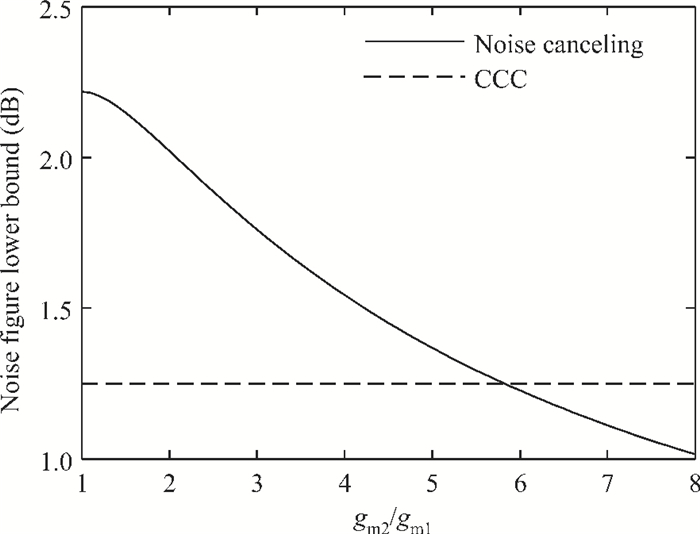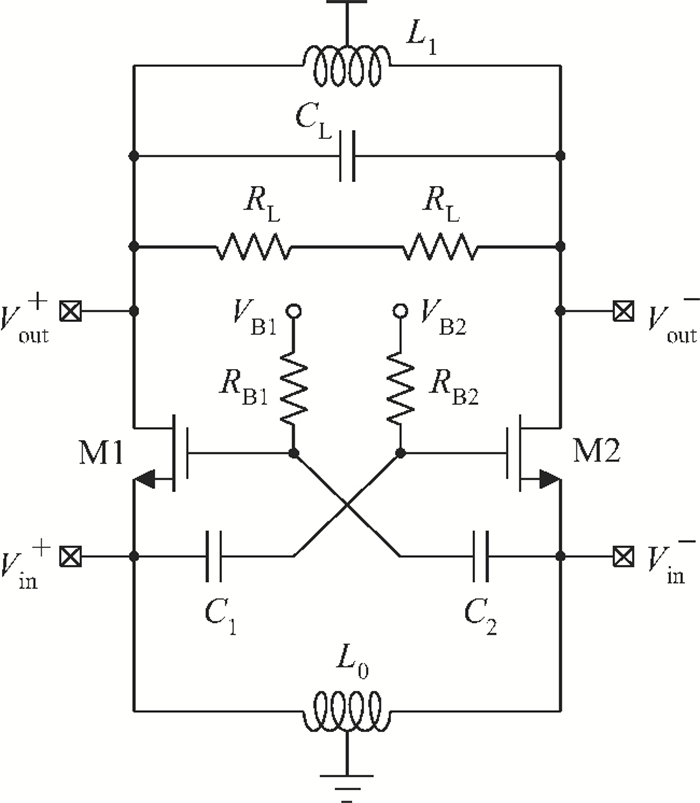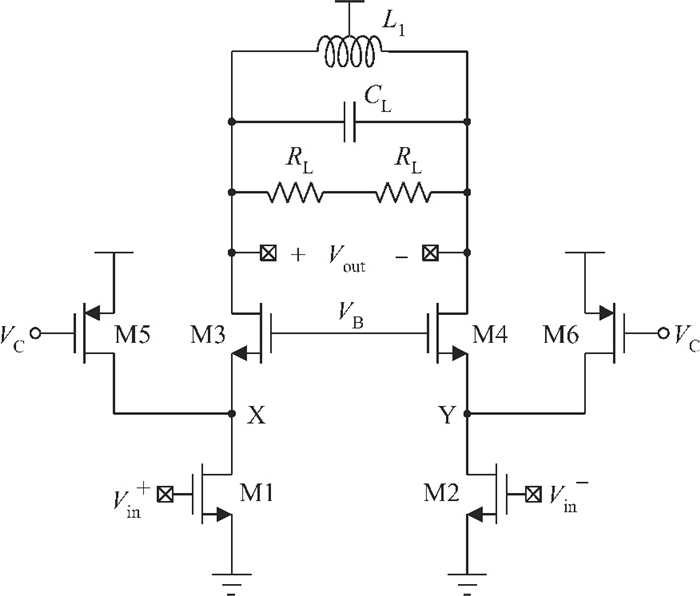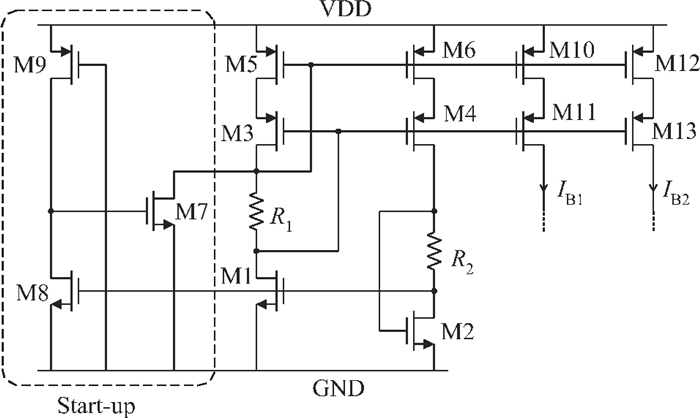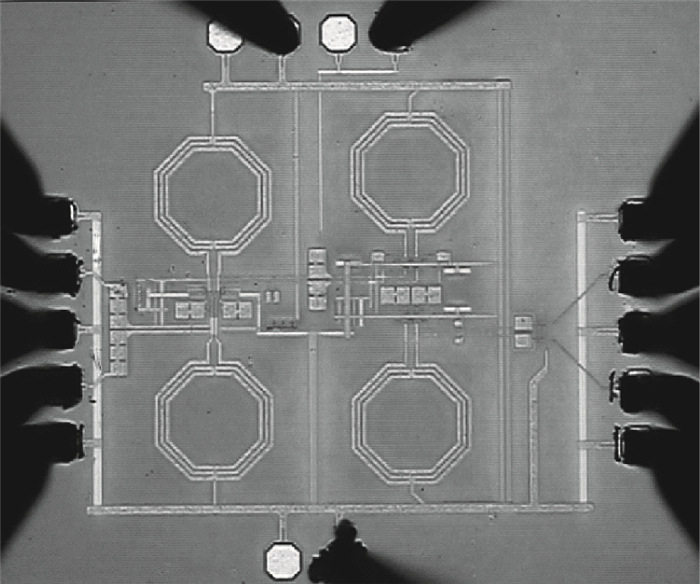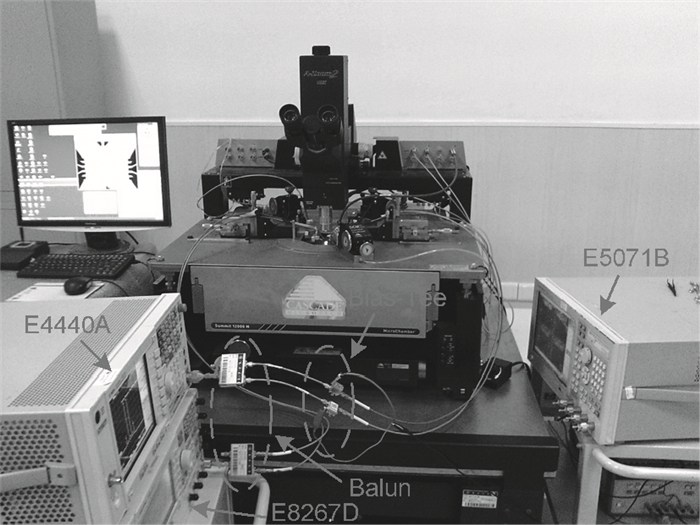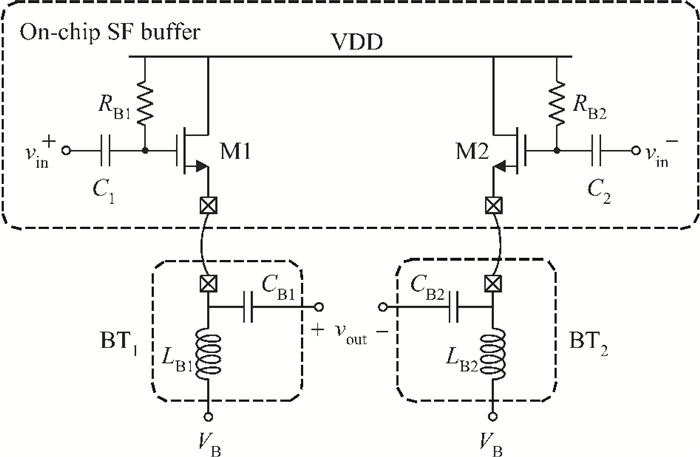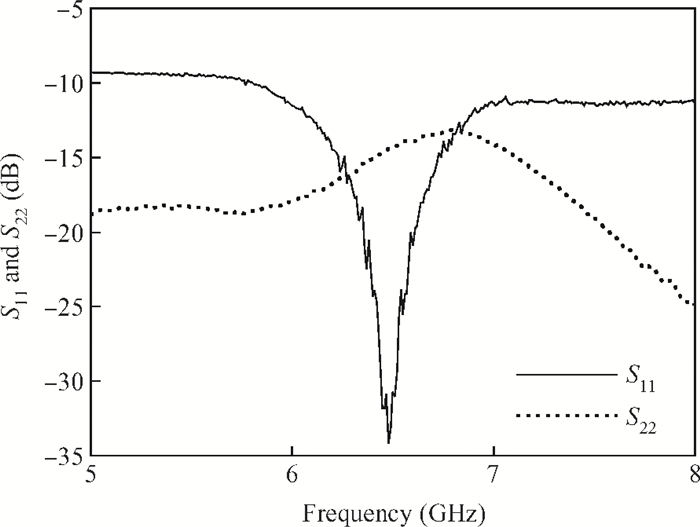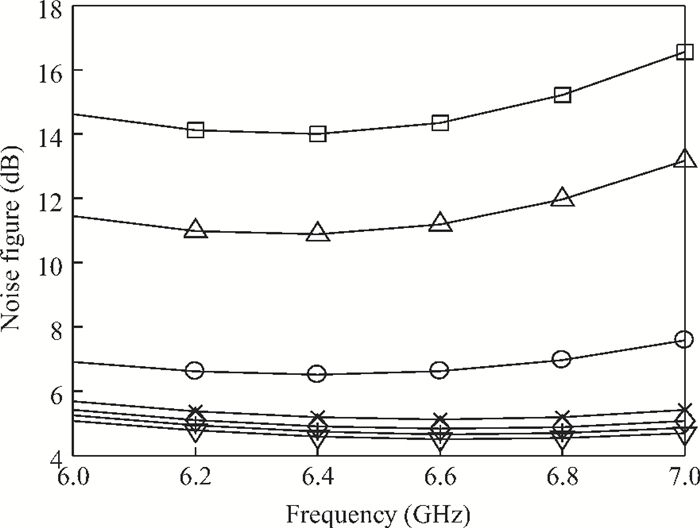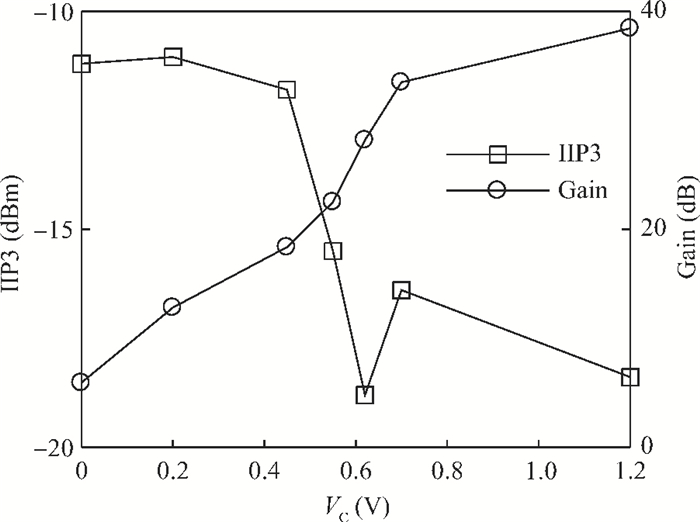| Citation: |
Xi Qin, Yumei Huang, Zhiliang Hong. A 6-7 GHz, 40 dB receiver RF front-end with 4.5 dB minimum noise figure in 0.13 μm CMOS for IR-UWB applications[J]. Journal of Semiconductors, 2013, 34(3): 035006. doi: 10.1088/1674-4926/34/3/035006
****
X Qin, Y M Huang, Z L Hong. A 6-7 GHz, 40 dB receiver RF front-end with 4.5 dB minimum noise figure in 0.13 μm CMOS for IR-UWB applications[J]. J. Semicond., 2013, 34(3): 035006. doi: 10.1088/1674-4926/34/3/035006.
|
A 6-7 GHz, 40 dB receiver RF front-end with 4.5 dB minimum noise figure in 0.13 μm CMOS for IR-UWB applications
DOI: 10.1088/1674-4926/34/3/035006
More Information
-
Abstract
A wideband receiver RF front-end for IR-UWB applications is implemented in 0.13 μm CMOS technology. Thanks to the direct sub-sampling architecture, there is no mixing process. Both LNA and VGA work at RF frequencies. To optimize noise as well as linearity, a differential common-source LNA with capacitive cross-coupling is used, which only consumes current of 1.8 mA from a 1.2 V power supply. Following LNA, a two-stage current-steering VGA is adopted for gain tuning. To extend the overall bandwidth, a three-stage staggered peaking technique is used. Measurement results show that the proposed receiver front-end achieves a gain tuning range from 5 to 40 dB within 6-7 GHz, a minimum noise figure of 4.5 dB and a largest ⅡP3 of -11 dBm. The core receiver (without test buffer) consumes 14 mW from a 1.2 V power supply and occupies 0.58 mm2 area.-
Keywords:
- IR-UWB,
- wideband receiver,
- low-noise amplifier,
- variable gain amplifier,
- noise figure,
- ⅡP3
-
References
[1] Xia L, Huang Y, Hong Z. A fully integrated BPSK amplitude and spectrum tunable transmitter for IR-UWB system. Journal of Semiconductors, 2009, 30(1):015006 doi: 10.1088/1674-4926/30/1/015006[2] Lee F, Chandrakasan A. A 2.5 nJ/b 0.65 V 3-to-5 GHz subbanded UWB. IEEE ISSCC Dig Tech Papers, 2007:116 http://ieeexplore.ieee.org/xpls/icp.jsp?arnumber=4381454[3] Daly D, Mercier P, Bhardwaj M. A pulsed UWB receiver SoC for insect motion control. IEEE J Solid-State Circuits, 2010, 45(1):153 doi: 10.1109/JSSC.2009.2034433[4] Zou Z, Mendoza D, Wang P, et al. A low-power and flexible energy detection IR-UWB receiver for RFID and wireless sensor networks. IEEE Trans Circuits Syst I, 2011, 58(7):1470 doi: 10.1109/TCSI.2011.2142930[5] Kulkarni V, Muqsith M, Niitsu K, et al. A 750 Mb/s, 12 pJ/b, 6-to-10 GHz CMOS IR-UWB transmitter with embedded on-chip antenna. IEEE J Solid-State Circuits, 2009, 44(2):394 doi: 10.1109/JSSC.2008.2011034[6] Zhou L, Chen Z, Wang C, et al. A 2-Gb/s 130-nm CMOS RF-correlation-based IR-UWB transceiver front-end. IEEE Trans Microw Theory Tech, 2011, 59(4):1117 doi: 10.1109/TMTT.2011.2114190[7] Terada T, Yoshizumi S, Muqsith M, et al. A CMOS ultra-wideband impulse radio transceiver for 1-Mb/s data communications and ±2.5-cm range finding. IEEE J Solid-State Circuits, 2006, 41(4):891 doi: 10.1109/JSSC.2006.870760[8] Van Helleputte N, Verhelst M, Dehaene W, et al. A reconfigurable, 130 nm CMOS 108 pJ/pulse, fully integrated IR-UWB receiver for communication and precise ranging. IEEE J Solid-State Circuits, 2010, 45(1):69 doi: 10.1109/JSSC.2009.2031799[9] Shim Y, Yuwono S, Kim S, et al. A 520 pJ/pulse IR-UWB radar for short range object detection. IEEE Radio Frequency Integrated Circuits Symposium, 2011:1 http://dl.acm.org/citation.cfm?id=2721804[10] Newaskar P, Blazquez R, Chandrakasan A. A/D precision requirements for an ultra-wideband radio receiver. IEEE Workshop on Signal Processing Systems, 2002:270 http://ieeexplore.ieee.org/lpdocs/epic03/wrapper.htm?arnumber=1049721[11] Chen W, Broderson R. A subsampling radio architecture for ultrawideband communications. IEEE Trans Signal Processing, 2007, 55(10):5018 doi: 10.1109/TSP.2007.896056[12] Shao K, Lu B, Xia L, et al. A high speed sampler for sub-sampling IR-UWB receiver. Journal of Semiconductors, 2010, 31(4):045004 doi: 10.1088/1674-4926/31/4/045004[13] Chen H, Lu B, Shao K, et al. A 4224 MHz low jitter phase-locked loop in 0.13-μm CMOS technology. Journal of Semiconductors, 2010, 31(1):015001 doi: 10.1088/1674-4926/31/1/015001[14] Shao K, Chen H, Pan Y, et al. A low jitter, low spur multiphase phase-locked loop for an IR-UWB receiver. Journal of Semiconductors, 2010, 31(8):085004 doi: 10.1088/1674-4926/31/8/085004[15] Shaeffer D, Lee T. A 1.5-V, 1.5-GHz CMOS low noise amplifier. IEEE J Solid-State Circuits, 1997, 32(5):745 http://ieeexplore.ieee.org/document/568846/?arnumber=568846&punumber%3D4[16] Blaakmeer S, Klumperink E, Leenaerts D, et al. Wideband Balun-LNA with simultaneous output balancing, noise-canceling and distortion-canceling. IEEE J Solid-State Circuits, 2008, 43(6):1341 doi: 10.1109/JSSC.2008.922736[17] Wambacq P, Sansen W. Distortion analysis of analog integrated circuits. Netherlands:Kluwer Academic Publishers, 1998[18] Wei Z, Embabi S, Gyvez P, et al. Using capacitive cross-coupling technique in RF low noise amplifiers and down-conversion mixer design. IEEE ESSCIRC Dig Tech Papers, 2000:77 http://ieeexplore.ieee.org/xpl/abstractKeywords.jsp?reload=true&arnumber=1471217&queryText%3D%28de+gyvez++j.+p.%3Cin%3Eau%29[19] Razavi B. Design of analog CMOS integrated circuits. NY:McGraw-Hill, 2001[20] Zhao Y, Dong Y, Gerrits F, et al. A short range, low data rate, 7.2 GHz-7.7 GHz FM-UWB receiver front-end. IEEE J Solid-State Circuits, 2009, 44(7):1872 doi: 10.1109/JSSC.2009.2020225[21] Zhou F, Gao T, Lan F, et al. A low noise CMOS RF front-end for UWB 6-9 GHz applications. Journal of Semiconductors, 2010, 31(11):115009 doi: 10.1088/1674-4926/31/11/115009[22] Xia L, Shao K, Huang Y, et al. 0.15-nJ/b 3-5-GHz IR-UWB system with spectrum tunable transmitter and merged-correlator noncoherent receiver. IEEE Trans Microw Theory Tech, 2011, 59(4):1147 http://adsabs.harvard.edu/abs/2011ITMTT..59.1147X -
Proportional views





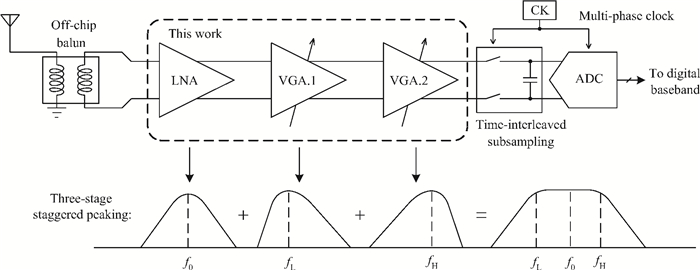
 DownLoad:
DownLoad:

